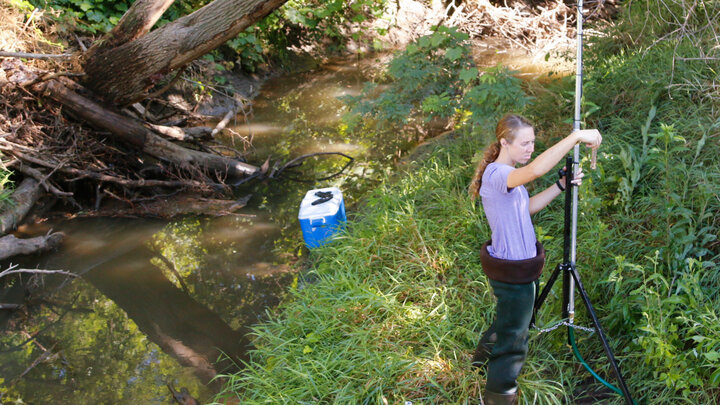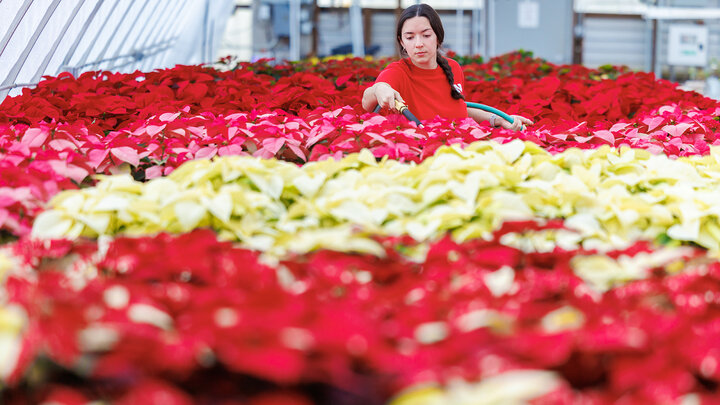Brittany Kirsch, agronomy and horticulture master’s student specializing in soil and water sciences, made it rain last summer.
Awarded a National Science Foundation National Research Traineeship in 2018, Kirsch is working with University of Nebraska–Lincoln faculty in understanding resilience of agricultural ecosystems, particularly the Platte River Basin in Nebraska.
The first phase of Kirsch’s research used U.S. Department of Agriculture data to develop a bird’s eye view of the effect different cropping systems within watersheds across Nebraska have on water quality within that watershed. She is also investigating the impact weather patterns — specifically drought and flood periods — have on water quality in the watersheds. Generally, the data has shown higher concentrations of nitrate, phosphorus and suspended sediments in watersheds with a higher percentage of acres planted in corn and soybeans. Wetter years also tend to have higher concentrations of nitrate, phosphorus and suspended sediments.
The second phase of the study involved making it rain on stream edges at two sites with very different land uses: Rogers Memorial Farm which is surrounded by agriculture, and Spring Creek Prairie Audubon Center which is surrounded by prairie.
Kirsch set out to see if her experiment would work, and if it did, how runoff from the different landscapes would affect the water chemistry of the stream.
Kirsch used two rainfall simulators and a truck full of water carried out one bucket at a time from Hardin Hall. The simulators were set up on the banks of small streams to minic a rainfall event of two inches in 35 minutes. Water samples were taken upstream and downstream of the sprinklers to verify whether water chemistry changes were the result of runoff or were already present in the stream.
Collected water samples were evaluated to see if there were differences between agriculture and prairie systems in nitrogen, phosphorus and suspended sediment concentrations downstream from the sprinklers.
Preliminary results indicate the stream next to agriculture land had higher concentrations of nitrates, suspended sediments and soluble reactive phosphorus than the stream next to the prairie.
Further evaluations on the water samples are currently being done.
Kirsch completed her bachelors in agronomy and horticulture and a minor in agricultural systems technology at Iowa State. With plans to graduate in 2020, she hopes to work in Extension or National Resources District communicating policy to farmers and producers.
The National Science Foundation established a National Research Traineeship program at the University of Nebraska-Lincoln. NRT programs are "dedicated to effective training of STEM graduate students in high priority interdisciplinary research areas, through the use of a comprehensive traineeship model that is innovative, evidence-based, and aligned with changing workforce and research needs," according to the National Science Foundation.
Students in the program are required to have two co-advisors from different departments to gain multiple perspectives and to work with those from varied backgrounds. Andrea Basche, assistant professor of agronomy and horticulture, and Jessica Corman, assistant professor in the School of Natural Resources, serve as Kirsch’s advisors.
For more information on Nebraska’s National Research Traineeship program, visit https://nrt.unl.edu/about-us.




